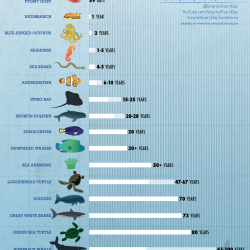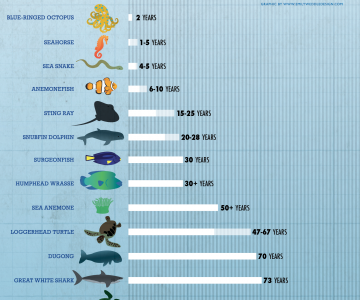When Is The Appropriate Time To Start Out Science And Animals Platform

 In conclusion, bird migration is a remarkable phenomenon driven by the need for resources and breeding success. By undertaking these incredible journeys, birds are able to access abundant food sources and find optimal conditions for raising their young. Environmental cues and navigational abilities guide them across vast distances, ensuring their survival and contributing to the intricate web of life on our planet. Understanding the reasons behind bird migration not only deepens our appreciation for these extraordinary creatures but also highlights the interconnectedness of the natural world. So, the next time you marvel at the sight of migrating birds overhead, remember the incredible journey they are undertaking and the vital role they play in our ecosystems.
In conclusion, bird migration is a remarkable phenomenon driven by the need for resources and breeding success. By undertaking these incredible journeys, birds are able to access abundant food sources and find optimal conditions for raising their young. Environmental cues and navigational abilities guide them across vast distances, ensuring their survival and contributing to the intricate web of life on our planet. Understanding the reasons behind bird migration not only deepens our appreciation for these extraordinary creatures but also highlights the interconnectedness of the natural world. So, the next time you marvel at the sight of migrating birds overhead, remember the incredible journey they are undertaking and the vital role they play in our ecosystems.
But how do birds know where to go? How do they navigate across vast distances, often returning to the same breeding grounds year after year? Scientists have discovered that birds rely on a combination of celestial cues, landmarks, and innate instincts to guide their journeys. They may use the position of the sun and stars, the Earth’s magnetic field, and even the smell of certain areas to navigate accurately.
 Bird migration is not without its challenges. Birds face numerous threats along their migratory routes, including habitat loss, climate change, and human activities. Conservation efforts are crucial to ensure the survival of migratory species and protect their critical habitats. By understanding the intricacies of bird migration and the factors that influence it, we can develop effective conservation strategies to safeguard these incredible avian travelers.
Bird migration is not without its challenges. Birds face numerous threats along their migratory routes, including habitat loss, climate change, and human activities. Conservation efforts are crucial to ensure the survival of migratory species and protect their critical habitats. By understanding the intricacies of bird migration and the factors that influence it, we can develop effective conservation strategies to safeguard these incredible avian travelers.
The migratory journeys of birds are not without challenges and risks. Many birds face numerous obstacles along their routes, including adverse weather conditions, predation, and human-induced threats such as habitat loss and collisions with man-made structures. These challenges underscore the importance of conservation efforts to protect critical habitats and promote the safe passage of migratory birds.
The significance of bird migration extends beyond the individual species themselves. These long-distance journeys play a vital role in maintaining ecological balance and biodiversity. Birds serve as essential pollinators, seed dispersers, and predators of insects and small animals. By moving between different habitats, they facilitate the exchange of genetic material and contribute to the health and resilience of ecosystems.
To truly appreciate the wonders of the animal kingdom and contribute to its conservation, we must delve into the fascinating realm of animal behaviors. Through careful observation, research, and collaboration, we can uncover the secrets of these behaviors and utilize our newfound knowledge to protect and preserve the delicate balance of our planet’s ecosystems.
Bird migration is a fascinating phenomenon that has captivated the minds of humans for centuries. Every year, millions of birds embark on incredible journeys, traveling thousands of kilometers across continents and oceans. But why do birds migrate, and how do they navigate such long distances? In this article, we will explore the intricate world of avian migration and uncover the secrets behind this remarkable behavior.
Breeding Success:
Migration also facilitates successful breeding for many bird species. By traveling to specific breeding grounds, birds can take advantage of optimal nesting conditions, including an abundance of food, suitable climate, and reduced competition. For instance, Arctic Terns undertake one of the longest migrations in the avian world, traveling from the Arctic to the Antarctic and back again. This incredible journey ensures they arrive in the Arctic during the brief summer, when food is abundant and conditions are ideal for raising their chicks.
Birds migrate for various reasons, primarily driven by the pursuit of food, breeding opportunities, and favorable climates. As seasons change, resources become scarce in their breeding grounds, prompting birds to seek more abundant food sources in distant locations. Additionally, many bird species rely on specific climates for successful reproduction, necessitating long-distance travel to reach suitable breeding grounds. These migratory journeys are not only essential for the survival of individual birds but also play a crucial role in maintaining the balance of ecosystems worldwide.
By delving into the world of bird migration, we gain a deeper understanding of the interconnectedness of ecosystems and the importance of preserving biodiversity. So, grab your binoculars, venture into the great outdoors, and embark on your own journey of discovery. Explore the wonders of the avian world, and let the mesmerizing dance of migrating birds ignite a sense of wonder and appreciation for the natural world.
Birdwatching, also known as birding, is a recreational activity that involves observing and studying birds in their natural habitats. It is a popular pastime among nature enthusiasts, allowing them to connect with the beauty and wonder of the avian kingdom. While anyone can enjoy the simple pleasure of observing birds, developing expertise in birdwatching requires a deeper understanding of bird behavior, ecology, and identification techniques.


Ingen kommentarer endnu